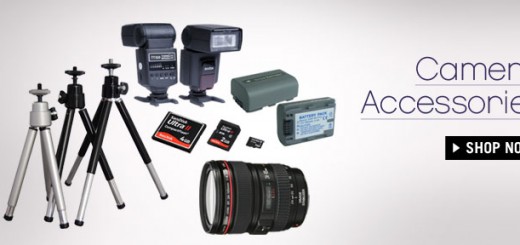Why Photography Matters in eCommerce
If a picture is worth a thousand words, imagine how much more it’s worth when converted to dollars. Ecommerce is more dependent on photography than any other kind of sales. There are a number of reasons for this. Not the least of which is the fact that people are generally not very good at describing things they see.
Professional writers do a pretty good job of using words to describe abstractions in a way that forms pictures in the minds of the readers. A good writer can make you see the plastic fruit so clearly, your mouth starts to water despite the fact that even if real, the fruit wouldn’t be edible. Everyone else has to make do with pictures. Here’s what you need to know about using pictures to enhance your ecommerce ambitions:

Take a Photography Course
The first thing you need to know about photography is that photography is hard, really hard. There is science involved, and even a little math. Then, there are the scary words like aperture, exposure, and ISO (technically, not even a word). You can try to figure that all out on your own. Or you can take a short course and let an expert teach you what you need to know.
TAFE training is one of the ways to take advantage of a short course in photography. It stands for ‘technical and further education.’ TAFE is a system of tertiary education offering courses mainly in vocational and technical subjects. If you have a website with an ecommerce component, photography is definitely a technical subject with which you need to be very well acquainted.
Learn to Better Use Color
If you don’t know color, you don’t know photography. As it happens, color and web design also go hand in hand. For many people around the world, color has a cultural and religious context. If you are selling in China something other than funeral services, you might want to avoid a lot of white, which is emblematic of mourning. Your royal purple might actually be signaling death in certain Catholic countries.
Sometimes, a black and white shot is more dramatic than full color. But accurate color may be very important depending on the product being sold. You will also need to consider factors such as age and gender. Bright, primary colors work well for a site viewed by children. For adults, those colors might make your efforts seem too Fisher-Price.
One study shows that while women like blue, green and purple, men strongly dislike brown, orange, and purple, but prefer black. Don’t just fill your page with colors you like. Rather, do your homework.
Choose the Right Tool for the Job
The way you present your products online has a significant impact on sales. Amateur-looking product shots erode consumers’ trust and could send them fleeing
One of the best ways to take the worst product shots is to use the wrong tool for the job. Smartphone cameras are impressive. But most are simply not up for the task. Some products are harder to shoot than others. You might need something a little more robust than what you use for Instagram posts.
Great product photography is not only about the glass. It also is about how well you control for different lighting situations. There is very specific equipment that makes lighting challenges go away. If you are selling collectibles like figurines, coins, or other items with detail that makes all the difference, you will need the right lens paired with the right technique.
Staging Matters
When you enter a furniture store, you don’t just see a random assortment of chairs and tables. You see small vignettes that imply a story of how that furniture will fit into your life. The same must be done with your product photography.
What size is that interesting collectible? Stage it next to something with a known size for scale. Are you selling a product intended to be used outside? Photograph it in the great outdoors. How you stage makes a lot of difference in whether the product will sell, as does the camera, the right use of color, and the right technique.


